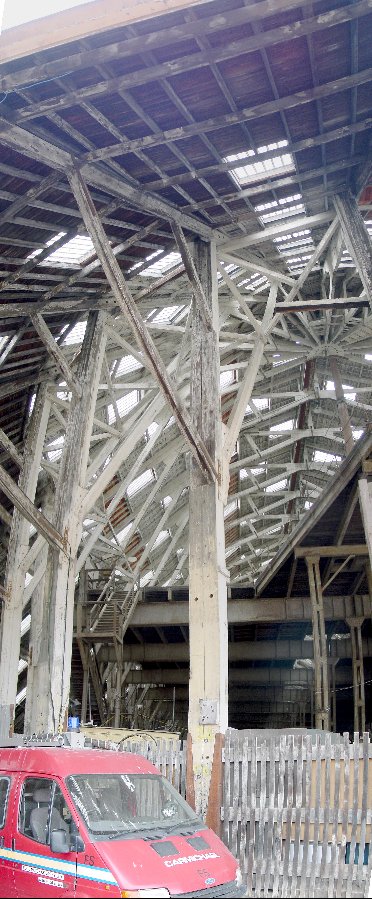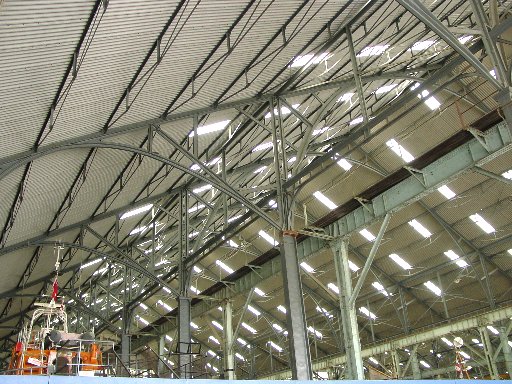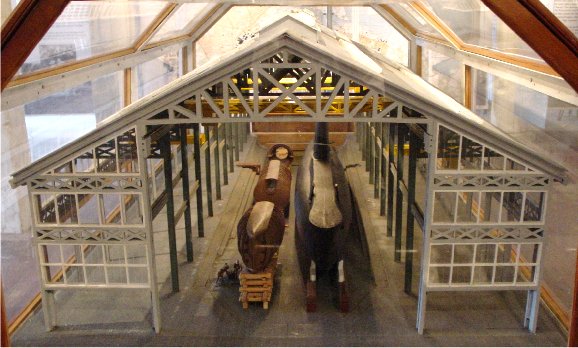
No. 3 Covered Slip - 1838

No. 4 Slipway
Until the 1800s, British slipways were open to the weather. Building a wooden ship required several years time, with the wood left to season exposed to the elements on the slipway. Inspector General of Naval Works Samuel Bentham saw covered slips during a trip to the Baltic and brought the idea home. The No.3 Slipway, made entirely of wood, is the oldest remaining at the dockyard. Covered slips were at the limits of wood technology of the time. The original roof of tarred paper, however, must have been disappointing, and it was replaced with metal. In the age of sail, a ship nearing completion, without its masts, would nearly fill the building. The steel work and mezzanine floor visible in the photo date to the 1900s.
After additional land was reclaimed from the river, Nos. 4, 5, and 6 Covered Slipways were completed in 1848. Built of iron, these slipways were on the limits of metal technology of the time, perhaps more impressive than certain better decorated train stations which receive more notice from architectural historians.
